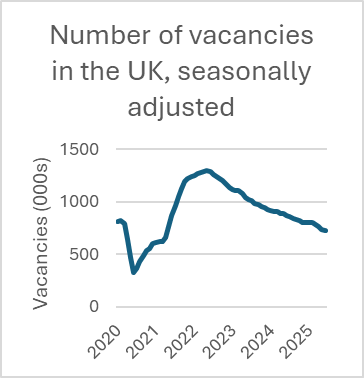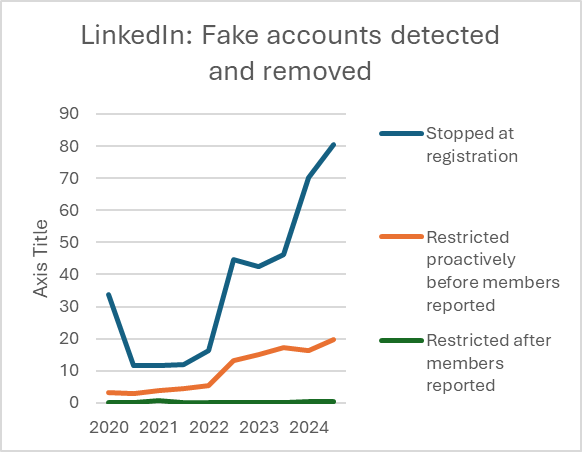How AI Recruitment Bots are Changing the Game for Senior Hires
Post on LinkedIn about being open to work, and your inbox will be overrun with messages and invitations from supposed “recruiters”. At first glance, they look legitimate. Job titles like “Global Head of Talent Acquisition” or “Specialist Recruitment Consultant”, working for real companies with big reputations. But dig deeper, and you will reveal many with no followers, no network, and no track record.
In short, they are AI-generated phantoms designed to lure senior professionals at their most vulnerable point, programmed to look the part, but offering nothing of substance.
For those navigating their careers at the director, consultant, or C-Suite level, the proliferation of AI recruiters is both a symptom and a risk. It points to a growing issue at the senior end of the job market, where scarcity of roles and heightened competition are creating fertile ground for scams. And for those companies looking for specialist talent to fill senior roles, reputations are being put at risk.
What’s behind this surge in fake recruiters? And what does it reveal about today’s senior job market?

Why AI recruiter scams are accelerating
The job market has tightened considerably in recent years. From April to June 2025, the number of open positions in the UK dropped by 56,000 (a 7.2% quarterly decline), marking the 36th consecutive quarter of falling vacancies and a total drop of 143,000 (16.5%) in a year. Data from Manpower Group, the global workforce solutions company, published in September, backed this up, revealing that hiring demand fell 17 percentage points over the past year and eight points in the past quarter, the sharpest decline globally for both periods.
Ironically, the UK consulting sector is cementing its position as a global powerhouse, in part due to the rise in demand for AI skills, according to the latest research from the Management Consultancies Association (MCA). Global businesses are turning to the UK for expertise, where record-breaking export growth and strong projections predict the sector will grow 3.6% in 2025 and 7.8% in 2026. But this appears to be bucking the trend.
During the Covid-19 pandemic, businesses froze hiring processes, junior staff were put on furlough, and senior leaders hunkered down for security. Once restrictions eased, there was a wave of pent-up mobility and the market briefly overheated. That cycle is now over. Most of those who shifted are settled, and many will not consider moving again for another five years.
Add in the explosion in AI adoption over the past couple of years, with businesses looking to streamline processes, drive efficiency, and cut costs through reducing the number of “inefficient” workers. Then you have the impact of the Employment Rights Bill in the UK, which has placed new pressures on employers in terms of contracts, redundancy processes, and working arrangements.
The result? Fewer vacancies, longer hiring cycles, and a significant slowdown in senior appointments. The Financial Times recently published an article revealing the extent of this, with recruiters reporting one of the fastest descents in permanent placements since August 2023. Interim projects that once took weeks to secure can now take months. Anecdotally, senior candidates are finding that transitions that used to take three to six months are stretching well beyond a year.
"...Scams are increasingly sophisticated and alarmingly convincing, blending into LinkedIn feeds, using legitimate companies to mask their deception."
It’s a textbook scenario. This environment of scarcity and delay has created the perfect conditions for scammers to flourish under the guise of recruitment consultants.
AI offers scammers the ability to scale deception quickly and at low cost. Fake LinkedIn profiles can now be created in minutes, complete with a fabricated CV, glossy profile photo and job history lifted from real company websites, creating a veneer of credibility.
Senior job seekers, eager to hear about opportunities in a thin market, are natural targets. With 49 million people searching for jobs on LinkedIn each week, according to a recent report by Buffer, the pitch is simple: a message about a high-level opening, often dressed in familiar corporate language, followed by a request to connect.
Some scams are crude and easy to spot. Titles that don’t match experience, inconsistent career timelines, or broken English. Others are increasingly sophisticated and alarmingly convincing, blending into LinkedIn feeds, using legitimate companies to mask their deception.
Are people actually falling for it? Yes. Even seasoned professionals can be caught out, particularly when messages arrive at a vulnerable moment: the fourth rejection of the week, the third month without a new contract. FOMO takes control:
- That job looks perfect.
- Can I really afford to ignore it?
- It won’t take long.
- What have I got to lose?
- They’ve reached out personally; they must think I’m a great fit!

The effects on senior professionals
If you’re lucky, connecting with an AI recruiter can lead to a simple data harvest only: your email, phone number and CV, normally accessible only to your personal network (depending on your settings), which can all end up in a database for resale.
"Beyond the obvious risks of data theft, there is a psychological cost. For senior leaders, extended periods without traction can erode confidence. Add a steady drip of bogus opportunities, and the effect is corrosive."
In others, there are direct attempts to extract money through bogus application fees, career coaching or training costs.
The subtler danger is reputational. By engaging with fake recruiters, senior professionals risk having their information circulated in contexts they cannot control, furthering claims to legitimacy. AI recruiters thrive by exploiting our vulnerabilities. It takes only one mistaken “introduction” for a senior leader’s details to end up in the wrong hands.
Beyond the obvious risks of data theft, there is a psychological cost. Long-term job seeking is already bruising. For senior leaders, extended periods without traction can erode confidence. Add a steady drip of bogus opportunities, and the effect is corrosive.
It’s not just individuals who are suffering. Genuine opportunities are getting lost in the fog of AI-generated openings, making it harder for companies to attract the right talent. Once-engaged senior candidates, who don’t have the time to trawl through illegitimate approaches in the hope of finding a nugget of gold, are returning to their trusted relationships with proven recruiters and established networks.
LinkedIn itself is also losing credibility as a job search platform. What was once the go-to hub for career networking is increasingly cluttered with noise: fake recruiters, automated messages and irrelevant connection requests.
It is still a valuable resource for thought-leadership, useful for networking with trusted peers and staying in touch with industry contacts. But as trust in LinkedIn as a source of genuine roles declines, senior professionals are increasingly looking elsewhere. Shifting toward closed networks, industry advisory groups, alumni circles and specialist recruiters who deal only in real, verifiable mandates.

What is being done?
The obvious question is what LinkedIn is doing to combat this rise. The platform mounts a robust defence of the rise of fake accounts, saying: “We continue enhancing our defences to prevent and remove malicious accounts.”
Its most recent Community Report, which shows data up to December 2024, states that “automated defences blocked 97.1% of the fake accounts we stopped during the July - December 2024 period, with the remaining 2.9% stopped by our manual investigations and restrictions. 99.7% of the fake accounts were stopped proactively, before a member report.”
But while profiles can be blocked, new ones are appearing almost instantly, and at a faster rate. LinkedIn says that 150.7m fake accounts were stopped automatically at registration (against 88.8m in 2023), with 35.9m restricted before being reported by users (32.2m in 2023) and 528.6k restricted after being reported (328.4k in 2023).
When you consider that there were 830m members in 2024and understand that 4.3% of accounts set up were discovered as fake, not including ones that were blocked at registration, the problem is clear. And these are the ones that have been found. The scale of automation means LinkedIn is playing whack-a-mole against a problem that is growing daily.
Posts about seeking work attract dozens of connection requests and “personalised” messages within minutes, only for them to slowly disappear over the next few days as profiles are removed. But the damage has been done.
Could LinkedIn do more? Stronger verification of accounts, tighter scrutiny of rapid-fire profile creation, and clearer education for users would all help, but the race to stay ahead of AI is a battle we are only just beginning.
For those navigating their next move, or seeking their next senior hire, the lesson is clear: beware the shortcuts. The future of recruitment may well involve AI, but the present is still best navigated by real people, with real connections, offering real opportunities.








